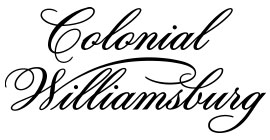The Colonial Williamsburg Foundation Williamsburg, Virginia, United States
Colonial Williamsburg interprets the origins of America (USA), the tension between slavery and freedom during the American Revolution, and the development of American democracy through the everyday stories of men and women who lived in eighteenth-century Williamsburg, Virginia. Exhibits, site tours, and street scenes weave together a complicated, often conflicting, story of a city whose residents viewed the notions of liberty and equality from different perspectives. Costumed interpreters bring to life Williamsburg's men and women—black, white, Native American, enslaved, indentured, and free—and the challenges they faced together during this pivotal time in history.
More than half of Williamsburg's population in 1775 was enslaved. Revolution created new opportunities for these African Americans and in the process, divided families and communities. Some individuals encouraged loved ones to join them in seeking freedom with the British, while others remained at home or sought out Patriot forces, in the hopes that victory might spell the end of slavery in a new independent nation. Colonial Williamsburg programming highlights the resolve of enslaved people to determine their own fates during the Revolution and, in the retelling of their stories, examines America's founding paradox—that freedom for some relied upon the enslavement of many.
Colonial Williamsburg Foundation preserves, restores, and operates Virginia's eighteenth-century capital as a city of ideas and aspirations. Colonial Williamsburg interprets the enduring stories of eighteenth-century Williamsburg by examining the aspirations, material culture, and environments of its inhabitants and how events that unfolded here revolutionized their lives and the lives of future generations. The Colonial Williamsburg experience includes more than five hundred restored or reconstructed original buildings, renowned museums of decorative arts and folk art, extensive educational outreach programs for students and teachers, resort hotels, restaurants, retail stores, a spa and fitness center, and gardens. Philanthropic support and revenue from admissions, products and hospitality operations sustain Colonial Williamsburg's educational programs and preservation initiatives.
Brief History of slave trade, slavery, and the American Revolution
Though the transatlantic slave trade began in the sixteenth century, the first Africans to be forcibly brought to British North America arrived by 1619 in Virginia's capital, Jamestown. Early forms of forced labor in the emerging colony consisted of white and black indentured servitude, as well as Native American and African slavery. Virginia legislators legally codified slavery and restricted the rights of free blacks by the 1660s. After the colony's capital was moved to Williamsburg in 1699, Virginia continued to grow as a slave society, dependent on the forced labor of about 42 percent of its population. As enslaved people struggled to forge meaningful lives in bondage, they helped to build a thriving commercial society through field work, skilled trades, and domestic labor. Some men and women fled their circumstances for uncertain lives at the fringes of slave society. Most, however, remained enslaved and claimed whatever they could to improve their circumstances and maintain ties to their families and communities.
As white Virginians declared independence from Great Britain, the ideals of their leaders, based upon liberty and man's natural rights, exposed a deep contradiction: their freedom depended upon slavery. During the American Revolution, approximately five thousand free blacks and slaves joined the American Continental Army, while more than twenty thousand blacks supported the British forces. Since 1979, Colonial Williamsburg has interpreted these complicated eighteenth-century stories though groundbreaking African American programs, supported by rigorous scholarship.
Brief History of Colonial Williamsburg
In 1926, the Rev. Dr. W. A. R. Goodwin, rector of Bruton Parish Church, approached John D. Rockefeller, Jr., about restoring the small town to its colonial past. The reconstructed Raleigh Tavern opened as the first public exhibition building in September 1932.Guided by the goal of providing an opportunity to inspire future Americans by the patriotism and purpose of the past, Rockefeller supported and financed Williamsburg's restoration until his death in 1960. Today the restored 301-acre Historic Area comprises 88 original buildings and hundreds of homes, shops, public buildings, and other structures that have been reconstructed, most on their original foundations. The Colonial Williamsburg Foundation is a private, not-for-profit educational foundation that receives no regular state or federal funding.
Organization
In 1979, The Colonial Williamsburg Foundation began to incorporate African American history and culture into its research, programs, and site interpretation. Historians, archeologists, architectural historians, curators, and others provide the scholarship necessary to craft responsible African American public history programs. Grants and endowments to CWF have funded major African American history initiatives, including the reconstruction of a rural slave quarter at Carter's Grove Plantation, the 1994 re-enactment of a slave auction, and a wide variety of interpretive programming throughout the Historic Area that brings to life the everyday experiences of African American men, women, and children.
Programs
Costumed historical interpreters share enduring stories of Williamsburg residents and offer guests the opportunity to interact with diverse people. Through our interpretations we invite guests to build connections between people and the meanings of our resources. We invite them to examine the past in conversation with the present, such as at the historic Peyton Randolph House where guests can explore African American resistance. The African American Religion exhibit traces the religious heritage of the African American Baptist congregation in Williamsburg in the late eighteenth century.








